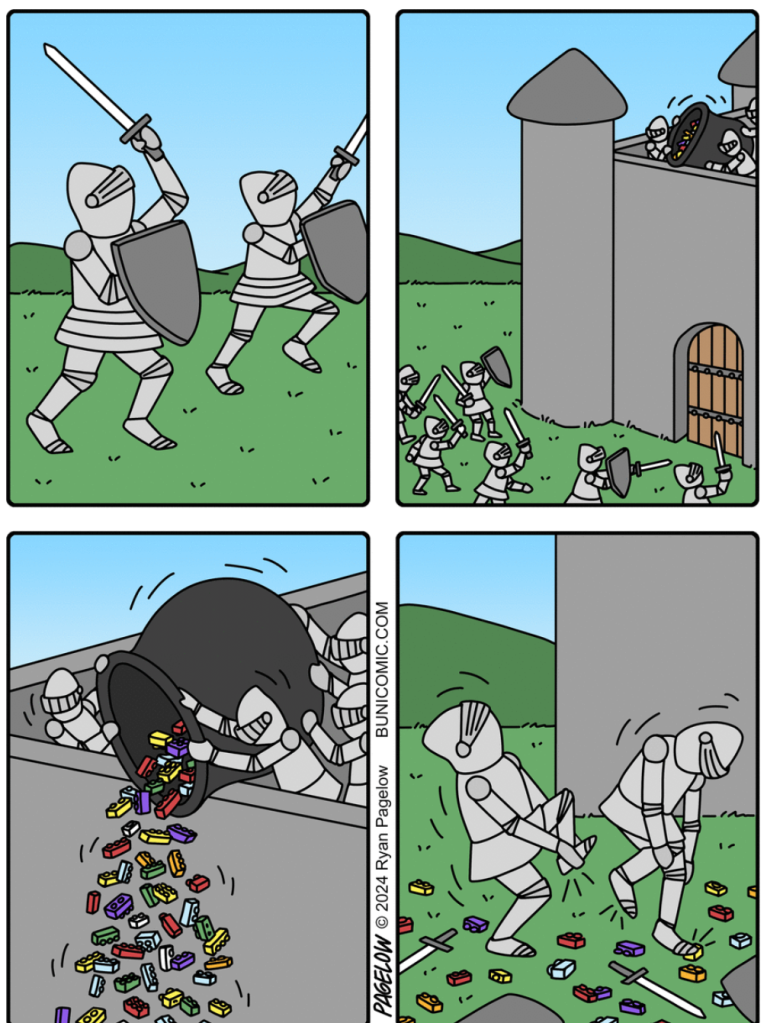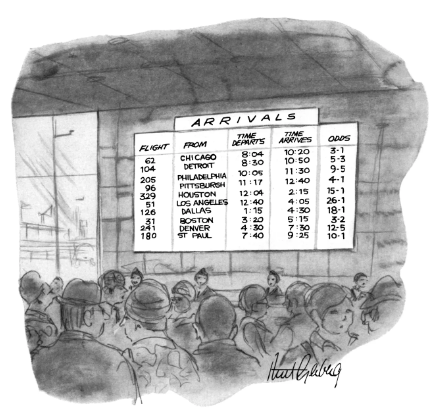Pete sent this in. It’s also a bit of a CIDU, since wouldn’t knights in armor have metal plate on the bottom of their feet?

And here’s one sent in by Usual John, a bit more of a comic scene-rendering than a gag LOL:



In particular, local rules can cause problems. In the card game Hearts, does the jack of diamonds mean anything special? Can you dump on the first trick? In Monopoly, do you complain that the game takes too long, but put $500 on Free Parking, and allow houses to be turned in for full value? In poker, is the worst low hand A-2-3-4-6 or 2-3-4-5-7? Complain about your favorite example of local rules in the comments.
From the Ask-Me-Anything episode:



CIDU QUEUE REMINDER
As always — but it needs saying explicitly again now and then — we like to think of this as a reader-participation site, and not just for your invaluable (or anyhow amusing) comments, but for suggestions of comics to run and discuss.
Please share your specific suggestions of panels or strips, in CIDU, LOL, and OY categories, either by direct email to

(that’s “CIDU dot Submissions” at gmail dot com) or by using the handy-dandy Suggest A CIDU form page!









































































